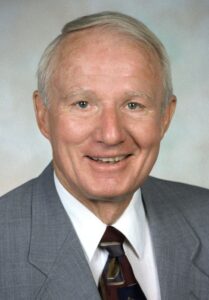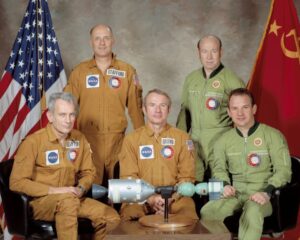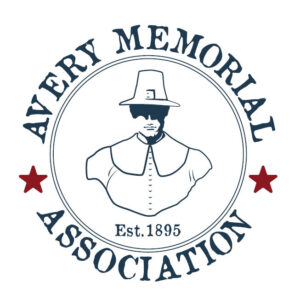Article and photos submitted by AMA member, Ken Nagel

In 1740, Anna Avery (Clan book #194) daughter of Lt. William and Ann (Richardson) Avery married Oliver Babcock, Sr. Their son, Oliver Jr., was a lieutenant in the Revolution. He was taken prisoner at the Battle of Fort Washington, November 16, 1776. He was opposed to the surrender of the fort and he broke his sword across a cannon declaring that it would never be surrendered. While Oliver was confined aboard the prison ship “Glasgow”, the British forced a man with smallpox to circulate among the prisoners in a deliberate attempt to infect them. Oliver was released in early January 1777 as part of a prisoner exchange. On January 25, 1777 he died of smallpox. He was posthumously promoted to captain for his bravery in battle. He had three daughters: one died February 27 and another on March 4 of the same disease that took their father.

Six generations later, in 1931, descending from the only surviving child, Vance Devoe Brand, 9X great-grandson of Captain James Avery, was born. He served as a Marine Corp pilot obtaining the rank of major. After his service he became a civilian test pilot and later graduated from the Naval test pilot school. In 1966, out of hundreds of hopefuls, he was one of nineteen men in the fifth group of men selected to become astronaut trainees. (One is not considered an astronaut until they have traveled outside of the Earth’s atmosphere).
In 1970, in the midst of the Apollo 13 crisis, Vance served as second shift CAPCOM (capsule communications) for that ill-fated flight. He was in line to take his own trip to the moon on Apollo 18 when the program was abruptly defunded after Apollo 17.
Vance’s second opportunity to make it to space came in 1973 as part of a lesser- known near disaster in space. Three astronauts aboard the space station Skylab didn’t know if their spacecraft would be able to perform the maneuvers needed for reentry due to malfunctioning thrusters. Vance and another astronaut were selected for the rescue mission. While the engineers worked out how they could shoehorn five men into a three-man space capsule, Vance and his co-pilot were tasked with finding a way the Skylab crew could fix their own problems. The pair did just that, thus eliminating the need for their trip into space.
Vance finally got his opportunity to become an astronaut in 1975 as the Apollo Command Module Pilot on the Apollo-Soyuz Test Project mission. The rocket was a leftover from the Apollo project. It was the last Apollo flight and is considered to be the end of the space race. The American crew spent nine days in space. Forty-four hours were spent docked to the Soviet Soyuz spacecraft using an adapter carried by the Americans in the same fashion as the lunar lander was carried – again with the near disasters… Upon reentry, gas used to power the thrusters leaked into the crew cabin to near fatal levels. Vance briefly lost consciousness. All three men required hospitalization for several weeks.
Astronauts are a never-quit breed and near death wasn’t enough to stop Vance from going back to space. In 1982, Vance was Commander of the Space Shuttle Columbia for its first fully operational flight. They successfully deployed two communications satellites and performed a number of flight tests to gauge shuttle performance.
 In 1984, Vance was again in command of the shuttle when he took Challenger on the tenth flight of the Space Shuttle program, He was responsible for the deployment of two more communications satellites Another crew member – for the first time in history – was outside of the spacecraft without a tether.
In 1984, Vance was again in command of the shuttle when he took Challenger on the tenth flight of the Space Shuttle program, He was responsible for the deployment of two more communications satellites Another crew member – for the first time in history – was outside of the spacecraft without a tether.
In 1985, Vance was training for a mission on the shuttle Atlantis when the mission was canceled because of the Challenger disaster.
In 1990 Vance made his final journey into space as commander of the Columbia. He and the crew spent 215 hours in space working in shifts around the clock making astrological observations using an instrument package carried in the cargo bay.
At the age of 91, Vance is still with us, having spent thirty days, two hours and two minutes in space. He has been awarded numerous awards, including being named to the Astronaut Hall of Fame and receiving two NASA Distinguished Service Medals. This is the highest NASA award and is only used when actions are so extraordinary that other forms of recognition would be inadequate.
In 1967, Vance purchased 40 acres of undeveloped land adjacent to Rocky Mountain National Park. In 2019 he donated the land to become part of the park. Congressional legislation to approve the border change is pending.

